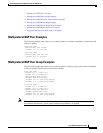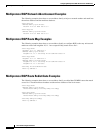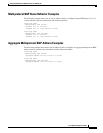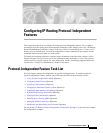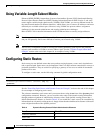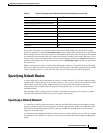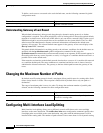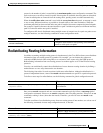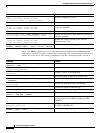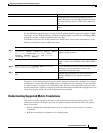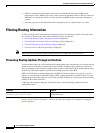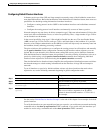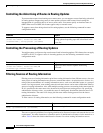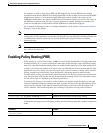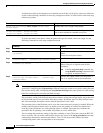
Configuring IP Routing Protocol-Independent Features
Redistributing Routing Information
IPC-367
Cisco IOS IP Configuration Guide
protocols, the number of paths is controlled by the maximum-paths router configuration command. The
static route source can always install six paths. If more paths are available, the extra paths are discarded.
If some installed paths are removed from the routing table, pending routes are added automatically.
When the traffic-share min command is used with the across-interfaces keyword, an attempt is made
to use as many different interfaces as possible to forward traffic to the same destination. When the
maximum path limit has been reached and a new path is installed, the router compares the installed paths.
For example, if path X references the same interface as path Y and the new path uses a different interface,
path X is removed and the new path is installed.
To configure traffic that is distributed among multiple routes of unequal cost for equal cost paths across
multiple interfaces, use the following command in router configuration mode:
Redistributing Routing Information
In addition to running multiple routing protocols simultaneously, the Cisco IOS software can redistribute
information from one routing protocol to another. For example, you can instruct the software to
readvertise IGRP-derived routes using RIP, or to readvertise static routes using the IGRP protocol.
Redistributing information from one routing protocol to another applies to all of the IP-based routing
protocols.
You also can conditionally control the redistribution of routes between routing domains by defining a
method known as route maps between the two domains.
The following four tables list tasks associated with route redistribution. Although redistribution is a
protocol-independent feature, some of the match and set commands are specific to a particular protocol.
To define a route map for redistribution, use the following command in global configuration mode:
One or more match commands and one or more set commands typically follow a route-map global
configuration command. If there are no match commands, then everything matches. If there are no set
commands, nothing is done (other than the match). Therefore, you need at least one match or set
command.
To define conditions for redistributing routes from one routing protocol into another, use at least one of
the following commands in route-map configuration mode, as needed:
Command Purpose
Router(config-router)# traffic-share min
{across-interfaces}
Configures multi-interface load splitting across different
interfaces with equal cost paths.
Command Purpose
Router(config)# route-map map-tag [permit | deny]
[sequence-number]
Defines any route maps needed to control
redistribution.
Command Purpose
Router(config-route-map)# match as-path path-list-number
Matches a BGP autonomous system path access list.
Router(config-route-map)# match community-list
community-list-number [exact]
Matches a BGP community list.



